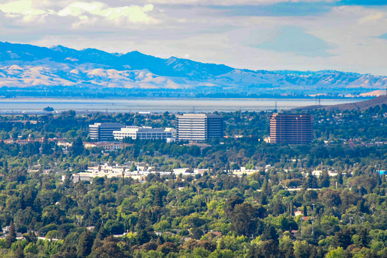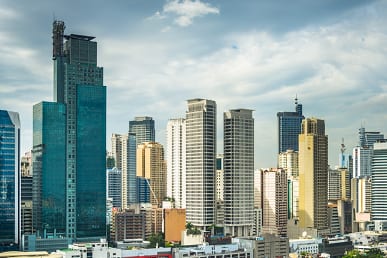7a. A U.S. company sponsored me for an immigrant visa. I am processing my immigrant visa at a U.S. Consulate and my eldest child will turn 21 next
month, April 2003. Will my child age out?
Children who are the direct beneficiaries of family sponsorship by a permanent resident or are the derivative beneficiaries of family or employment based sponsorship are specifically addressed in CSPA. CSPA
requires that the children must seek legal permanent residency status within
one year of a visa becoming available.
The State Department has stated that for consular processing purposes, a
visa number is considered to have become available when the petition has
been approved and the priority date is current, whichever comes later.. The
BCIS states that for Adjustment of Status purposes, the visa number becomes available the first day of the month that the Department of State Visa Bulletin indicates availability of a visa number. If the child sought permanent residency within one year of the preceding dates, then the special provisions of section 3 of the CSPA would apply to determine the child’s age.
7b. How do the BCIS or the State Department determine when my eldest has sought permanent residency?
For BCIS purposes, the child seeks permanent residency on the date the child files a Form I-485 for adjustment of status application. The State Department has advised its Consulates to apply one of two tests depending on the circumstances. If the child’s parents consular processed their own
immigrant visas, then the date the child submits a from DS-230, Part 1 will be considered the date on which he applied to seek permanent residency. The child must submit his own DS-230, Part 1 or its predecessors, OF-230 Part I, or OF-179 Biographic Data Sheet. This must be filed within one year of a visa becoming available. Filing of the parent’s DS-230 will not count.
If the child is following to join a parent who has adjusted status in the U.S., the child will be considered to have sought legal permanent residency status when the parent filed Form I-824 with the BCIS. This form is usually completed when the parent files his adjustment of status application with the BCIS. If more than one year has passed since a visa number became available when the form was filed, the child will not have the benefit of CSPA.
7c. How does CSPA apply once it has been determined that my child sought permanent residency within one year of a visa number becoming available?
Section 3 of the CSPA requires the application of a formula for determining the children’s ages who are not sponsored by U.S. Citizens. The time the immigrant visa petition was pending must be subtracted from their age on the date they seek permanent residency. If that age is under 21 the child will be considered under 21. If the age is over 21, the child is automatically converts to the next visa category, but instead of getting a new priority date, retains the original priority date. For example if the immigrant visa petition took 3 years to process, 3 years would be subtracted from the child’s age at the time the child sought permanent residency. If this child, for instance was 22 at the time he filed his adjustment of status, the CSPA would find him to be 19 years old:
22 (age on date filed adjustment of status) – 3 (years immigrant visa
petition was pending at BCIS) = 19 (CSPA age).
If, in the above, the child was 25 when the adjustment of status was filed, the CSPA would consider him to be 22 years old and he would have aged out (25 -3 = 22).
Both BCIS and the State Department have stated that once the above formula is applied, the child retains the same age throughout the pendency of the case.
7d. My eldest child filed for adjustment of status, but his priority date
retrogressed. What happens now?
The BCIS has instructed its adjudicators in this scenario to note the age of the child when the I-1485 adjustment of status application was filed. Once a visa number becomes available again, the BCIS will use the age when the number was first available in applying the above formula. If the I-485 was not filed until the second time the numbers became available, the BCIS will use the child’s age when the I-485 was filed and not the age when the visa number first became available.
7E. How are the number of years an immigrant visa was pending determined?
This figure is the difference between the date the I-140 or I-130 petition was filed and the date it was approved. For employment-based I-140 petitions, it does not start on the priority date. For many employment-based cases, the priority date is determined when a Labor Certification Application is filed. This date is not used for determining how long a petition was pending.
8. I have a K visa? Does CSPA apply to me?
The CSPA does not confer benefits to K and V visa holders. BCIS and the Department of State have stated that a K visa holder or V visa holder who will age out cannot use CSPA to obtain an extension of that particular visa.
9. I am from the Philippines. My mother petitioned for me when she was a legal permanent resident. She has now become a U.S. citizen. I was informed that I was now converted to a new immigrant visa category and that my waiting period for a visa is much longer now. Can the CSPA help me?
Under the Immigration law, when a legal permanent resident becomes a U.S. citizen, the children she has petitioned for convert form second preference to a new category known as first preference. First preference visa priority dates are more current for all countries except the Philippines. This means less of a waiting period unless the children are from the Philippines.. The CSPA now allows sons and daughters who will automatically convert from second preference to first preference to opt out of the conversion. This means a Filipino son or daughter could retain second preference status with its earlier visa availability.
The CSPA is an attempt by Congress to address the BCIS (formerly known as the INS) and State Department processing delays in approving permanent residency status. Prior to CSPA, any children beneficiaries of immigrant visa petitions who turned 21 before their immigrant visa or adjustment of status was adjudicate were no longer eligible for the immigrant visa. This is commonly known as aging out. Backlogs at BCIS and the State Department meant that even though the visa petitions or adjustment of status applications were filed long before the children turned 21, they aged out and could not be granted permanent residency status. Congress enacted an ameliorative statute allowing the age of children to be artificially frozen if certain conditions were met so that they would not age out.
2. The CSPA sounds straightforward. Have BCIS and the State Department
started applying the CSPA?
The CSPA is a very awkwardly written law. Until recently, the State
Department only allowed its Consulates to apply it in limited situations and
required Consulates seek an advisory opinion from headquarters before
approving immigrant visas under CSPA. Advisory opinions take time to be
issued adding to the processing delays. But, the State Department has
recently issued guidelines to its Consulates on how they should apply the
CSPA without the need for advisory opinions.
The BCIS also initially provided limited guidance to its field offices and
service centers on the application of CSPA. Like the State Department, it
too just issued guidance to its offices on how it interprets the law and how
it should be applied.
3. Who does the CSPA apply to?
Both the State Department and BCIS have advised that the CSPA applies only to those children whose immigrant visa petitions, either as a principal beneficiary or a derivative beneficiary, are approved on or after August 6, 2002. In some very limited circumstances, it may also apply to petitions filed and approved before August 6, 2002.
4. My sister sponsored me for permanent residency. I was interviewed at the Consulate before August 6, 2002 and my eldest child turned 21 just before my interview. Will CSPA now apply for him?
The State Department has limited the application of CSPA in pre-August 6, 2002 cases allowing some children to still benefit under CSPA. This includes children whose parents were sponsored either through family or work petitions for permanent residency. If the child applied for a visa and was refused in cases filed before August 6, 2002 because he aged out, the CSPA will not apply. But, if the child was refused on any other ground, the Consulates must obtain an advisory opinion on how it should apply the CSPA. The State Department anticipates the majority of its CSPA cases will be pre August 6, 2002 cases. It has therefore instructed its Consulates to begin any CSPA case by determining whether the age out child was ever denied a visa on the grounds that he aged out.
The BCIS considers pre August 6, 2002 cases that have had no final determination made before August 6, 2002 to be eligible for CSPA. This has been expanded to include petitions filed before August 6, 2002 that are pending. A pending visa petition includes those on motions to reopen or reconsider or on appeal with the Administrative Appeals Office or the Board of Immigration of Appeals. But, this is limited to those appeals filed and/or pending on August 6, 2002.
Motions to reopen or reconsider based on the child aging out because of BCIS delay will not count. If the BCIS, or its predecessor, the INS, denied an immigrant visa petition because the child had aged out, motions to reopen or reconsider will not allow the child to obtain CSPA benefits.
5. I am processing my immigrant visa at the U.S. Consulate and my eldest
turned 21 on August 6, 2002. Does CSPA apply?
CSPA will apply to children who turn 21 on August 6, 2002. The children will have to meet the other criteria of the law to obtain its benefit..
6. I became a U.S. citizen in October 2002. I petitioned for permanent residency for my children in November 2002. My eldest turned 21 in December 2002. Has he aged out?
Generally, the child has not aged out. The CSPA freezes the age of the unmarried children of U.S. citizens in three circumstances. First, if the child is not sponsored until after the parent becomes a U.S. citizen, the child’s age is frozen on the date of the filing of the petition. In the question above, the controlling age for the children would be their ages in November 2002. If the BCIS or State Department took four years to process the case, the children would still be considered to be under the age of 21.
Second, if a parent sponsors children when the parent is a permanent resident and then becomes a U.S. citizen, the children’s ages are frozen on the date the parent becomes a U.S. citizen. For instance, if in the above question, the parent filed immigrant petitions for her children before October 2002, their ages would freeze the day she became a U.S. citizen.
The third circumstance where a U.S. citizen’s child’s age is frozen involves dissolution of marriage. The married children of a U.S. citizen cannot be petitioned for as an immediate relative. If the child of a U.S. citizen is married and subsequently divorces before reaching the age of 21, that child’s age can be frozen under CSPA. The U.S. citizen parent must have filed an immigrant petition. The child’s age would freeze on the date the divorce became effective as long as that occurred before the child turned 21.




